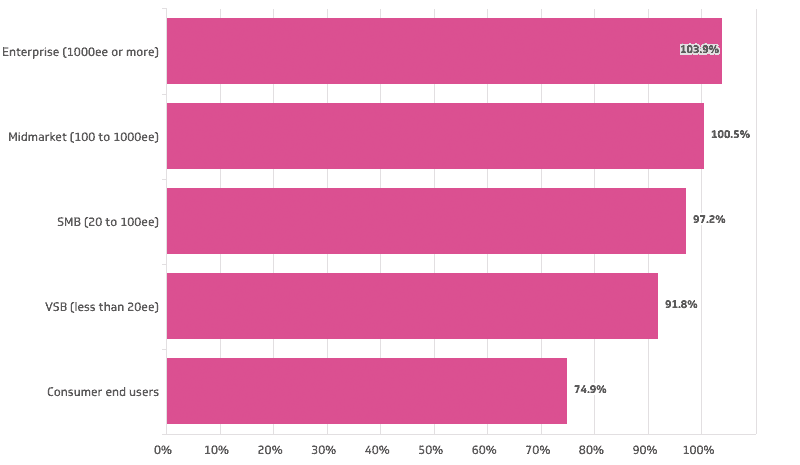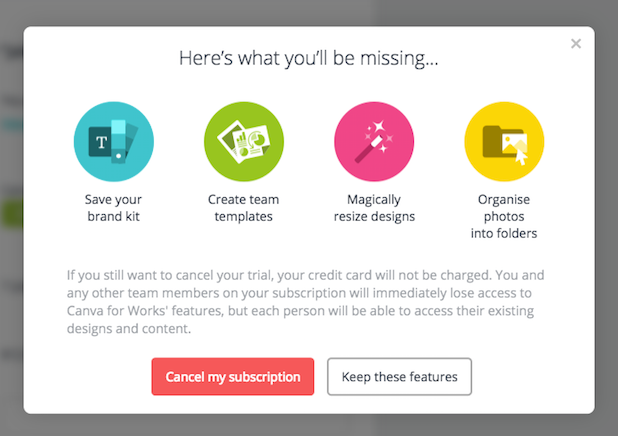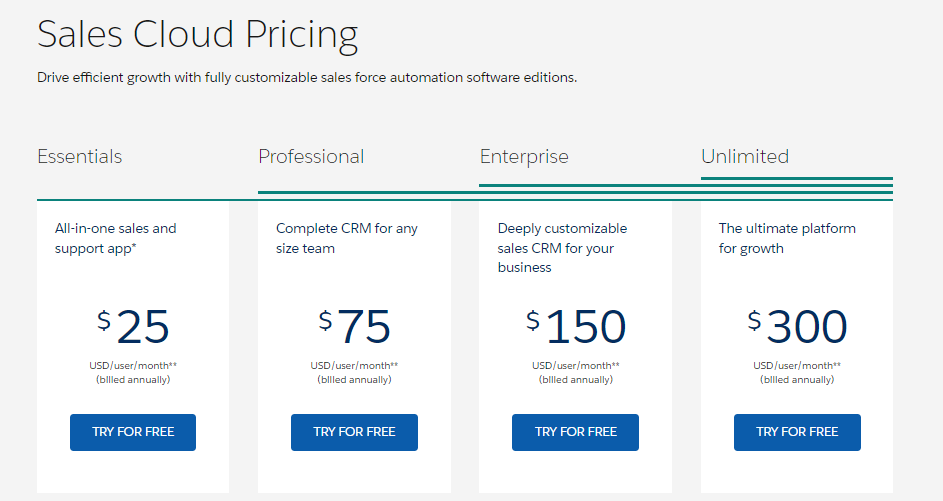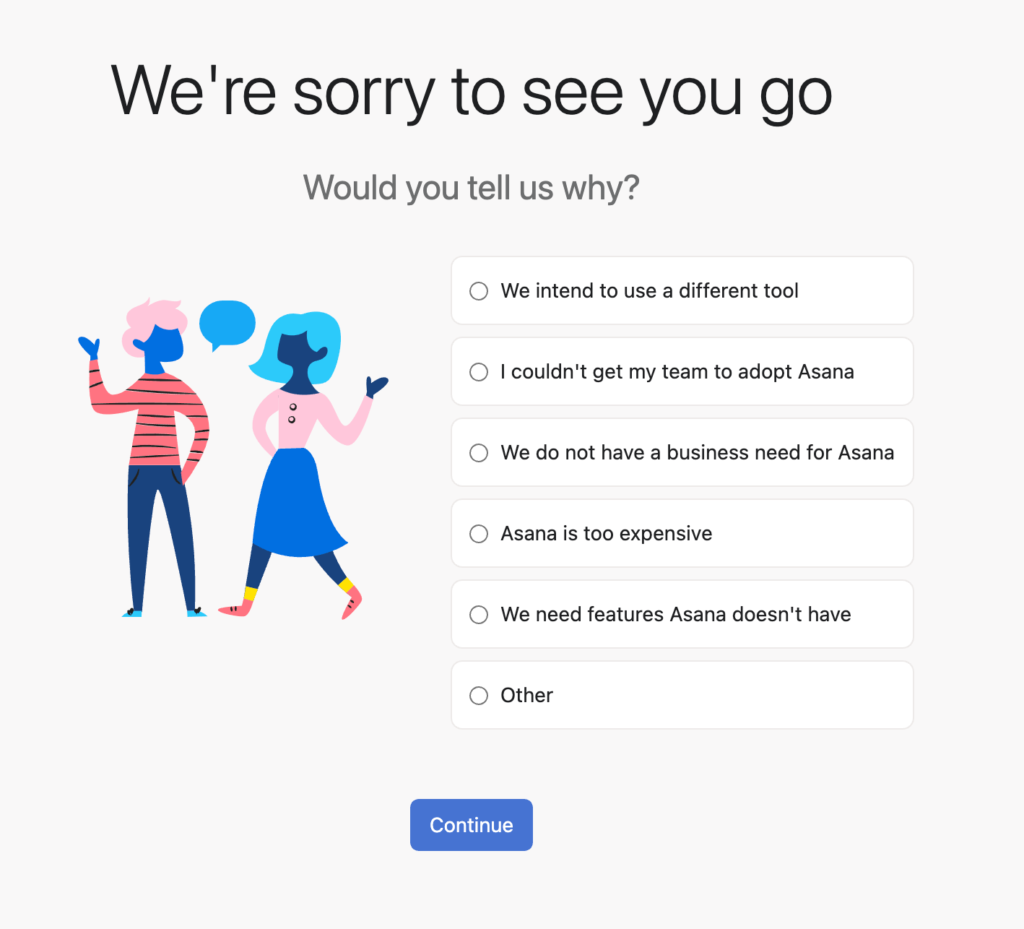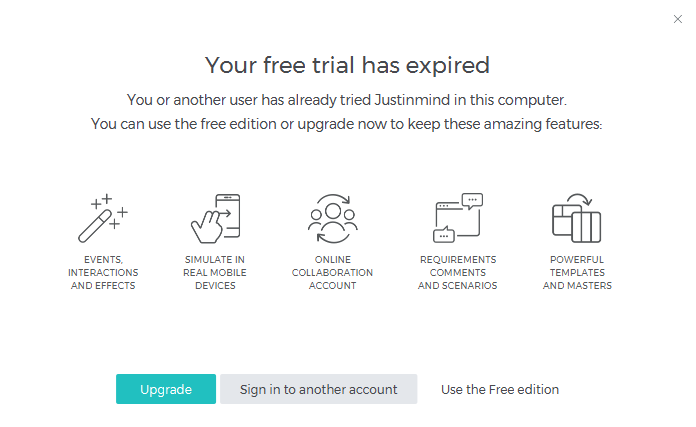SaaS customer retention only happens when you have customer satisfaction (or if people have no other choice).
I digress.
Customer satisfaction is essential to any business. The challenge, however, is that many businesses find it difficult to keep their customers happy and to come back time and time again.
Even when you think that there are so many users signing up for your SaaS solution, the chance of them canceling their subscription is always there. That’s why SaaS customer retention is arguably the most important metric for SaaS companies.
A high churn rate can lead to a downward spiral of negative effects—such as a reduction in customer lifetime value, an increase in support costs, and lower adoption among new users.
By all means, this makes customer retention a key concern for those in the SaaS industry. No matter how brilliant your SaaS service is, if your customers aren’t going to stick around long enough to enjoy it, then what’s the point?
In this guide, we’ll explore some key strategies that you can use to improve your SaaS customer retention. These tips will help you understand why churn happens, identify red flags that indicate impending churn, and take actionable steps to reduce churn rates.
What Is NRR and Why Is It Crucial for SaaS Businesses?
Net revenue retention (or NRR) refers to the percentage of your customers who remain on your platform over time. It’s usually calculated on a yearly basis.
In the intricate landscape of software platforms, the concept of net revenue retention (NRR) emerges as a pivotal metric for sustainable growth. Just as writers deftly weave perplexity and burstiness into their narratives, NRR measures the percentage of customers that remain loyal to your platform over time, mirroring the interplay of complexity and variation.
Akin to the evolution of writing styles, businesses now have the option of leveraging a no-code platform, which allows them to adapt and customize their offerings without intricate technical knowledge.
This innovative approach encapsulates the delicate balance between intricate intricacies and versatile adaptability, much like the calculation of NRR, offering businesses a dynamic tool to fuel their long-term success.
NRR is calculated by dividing the recurring revenue from renewal customers at the end of a period (incorporating expansion/contraction/churn) by the recurring revenue those customers represented at the beginning of that period.
Once you have your NRR, you can compare it to your churn rate to determine how close you are to hitting your target. Chances are, you’ll want to hit your target.
Why?
Because NRR is crucial for SaaS businesses, it helps you understand how healthy your customer base is and how likely it is to grow. It’s also a crucial indicator of how effective your acquisition strategy is.
If your NRR is low, it might be an indication that you’re acquiring the wrong type of customers. It could also be an indication that your product is missing something people are looking for. If your NRR is high, you’ll know that you’re acquiring the right types of customers.
How to Calculate Net Revenue Retention: The Formula
Now that we understand what NRR is and why your SaaS should care about it, let’s talk about how you can calculate it. NRR has four variables that are used in a simple formula:
- Starting MRR → Monthly recurring revenue
- Contraction MRR → Revenue lost from existing customers from downgrades
- Churn MRR → Revenue lost from the customer churning (cancellations or non-renewals)
- Expansion MRR → Upselling, cross-selling, price increases
Source: Paddle
Let’s put it into a simple use case. Say your business has an MRR of $10,000. Your upsell revenue for the month is $1,000. You lose $1,000 to downgrades and $1,000 in churned revenue as well. We can calculate the NRR:
NRR = (1,000 – 1,000 – 1,000 + 10,000) / 10,000 = 90%
Keep in mind that NRR doesn’t take into consideration the revenue generated from new customers. With this formula, we’re only concerned with how well we’re keeping our existing customers.
Now the question is, “Is 90% of NRR okay?”
There are lots of opinions about the “ideal” SaaS NRR, and most experts seem to share the same view: the ideal NRR in SaaS should be above 100%. That’s for the enterprise level, though.
For small-medium SaaS businesses, 90-100% NRR rate is still considered great. So, if your SaaS business has just started and you’re currently finding out what works and what does not, the answer to the question above is “Yes.”
In the ever-evolving technological landscape, companies offer innovative solutions that are transforming business operations. A SaaS development company prioritizes scalability, security, and seamless user experiences, ensuring global access to their services and enhancing efficiency, collaboration.
These companies play a crucial role in IT infrastructure costs, enabling them to allocate resources more effectively. Moreover, the flexibility of internet models facilitates the rapid deployment of new features and functionalities. Consequently, businesses can swiftly adapt to market changes and maintain a competitive edge.
Additionally, implementing colocation solutions can further optimize operational efficiency by providing a secure and scalable environment for hosting essential applications and services, ensuring that businesses are well-equipped to handle growth and change.
Note: You’ll also take into consideration the timeframe you’re using to calculate NRR. If you’re using one month, then a 90% NRR is poor. If you’re using one year, then it falls within an acceptable range.
Source: OpenView
Realistically though, the higher, the better– as it indicates your customers are satisfied with your business and get value from it. It can also translate into how rapidly your business is growing.
Understanding Why Churn Happens
Churn is one of the most important metrics you can track to help you understand your customers better. A churn analysis allows you to determine why your customers may be leaving, which can help you take actionable steps to reduce your churn rates.
This is where recording of revenue data makes a huge difference. Why? Because it pinpoints the exact moment a client starts losing interest. When you have detailed numbers, you can develop precise strategies to re-engage users and reduce cancellations.
The churn analysis helps you understand why customers might leave, allowing you to take specific measures to help reduce these rates.
Churn rates vary depending on the industry, but a high customer churn rate of 25% or more is a huge red flag. It means that one-quarter of your customers are leaving each month.
Also, pay attention to what sales pitch you use throughout the funnel. Sometimes it may prevent you from acquiring new customers. Consequently, won’t be able to keep the churn rate negatively stable as it is.
Using some professionally designed sales pitch templates will help you out, ensuring that your messaging aligns with your target audience’s needs and pain points. This can impact brand reputation, as unhappy consumers are more likely to convey their adverse experiences, additionally deterring potential new clients.
Furthermore, exploring customer segmentation can provide insights into which specific customer groups experience higher churn rates.
If you don’t address the root cause of your high churn rate, you could be looking at a significant reduction in your customer base in a short amount of time.
So, what’s causing your customers to churn, though? These questions below can help you analyze the whole issue you have with your customers.
- Are they not seeing value in your product?
- Are they struggling to navigate your user interface?
- Are they struggling to use your product?
- Are they receiving poor customer support?
- Are they having trouble integrating your product with other systems?
To ascertain your customer churn rate, ascertain the quantity of subscribers who cease utilizing your service during a specified interval. This figure is crucial for entities reliant on recurring revenue models, offering insights into the steadiness and longevity of their earnings throughout successive billing periods.
It serves as a fundamental barometer for assessing the enduring fiscal robustness of businesses grounded in subscription frameworks.
Red Flags that Indicate a Customer Exodus Is Coming
If you see any of these red flags, it’s time to act. If you don’t, you risk losing customers. The following are common signs that indicate an impending customer exodus:
- Ticket volume on your support line is high
- Fewer customers are signing up for your product
- Fewer customers are upgrading their subscriptions
- Fewer customers are renewing their subscriptions
- Fewer customers are referring new customers
- You notice that your customers are taking longer than expected to perform tasks
- You notice that customers have trouble completing tasks
Before you spot those red flags, you can keep an eye on current SaaS customer trends.
Here are some important numbers on the SaaS customer statistics you want to keep in mind so that you can prevent any of those red flags:
- 70% of SaaS trial users contacted by support or sales managers feel more engaged.
- 64% of users even want to pay higher for next-level customer care and support
- At least 14% of users utilize the SaaS service once a week.
- Only 17% of active paying users use the SaaS service on a daily basis.
- 67% of users expect a higher quality standard from SaaS companies.
- 76% of users feel satisfied with the SaaS as the company created features that meet their needs.
How to Go Beyond 100% NRR?
Improving your SaaS NRR means lowering your churn rate. These top strategies below can show you what you need to bring to the table for that.
#1. Provide the Best Customer Service
Customer service is more than a marketing buzzword. It’s a critical part of your business that can make or break you– regardless of the size of your business or the industry you belong to.
Providing stellar customer service is essential to keeping your customers happy, and happy customers are more likely to stick around. A statistic shows that at least 70% of customers want customer service agents’ awareness of sales interactions to make them happy and feel valued.
There are multiple ways that you can provide exceptional customer service, but the most important thing is to be proactive. You should be proactively monitoring your support channels and responding to tickets in real-time.
Customer service representatives should be empowered to handle most issues and be given the autonomy to take necessary action without requiring approval from senior management.
A practical tip to consider is to check domain authority. This approach ensures a secure online presence by offering precise and dependable evaluations of domain authority. Such a system is widely utilized by substantial corporate entities and large-scale organizations. It’s a strategy worth noting for its effectiveness.
#2. Optimize Product Engagement
The product is the first touchpoint with your customers—it’s the first thing they’ll interact with when they sign up for a subscription.
Ideally, the product is designed to be intuitive and user-friendly. It’s supposed to solve the problems of your target audience and help them achieve their desired outcomes.
Once your customers have access to the product and start using it, they should be able to achieve success with ease. The product is also a key driver of SaaS customer retention. Make sure to provide User Manual, User Guide, or Help Section. You can also use an online user manual tool for your SAAS product.
In the competitive world of SaaS, your solution must stand out. It’s not enough to simply offer a functional SaaS solution; it must also provide a unique value proposition that differentiates it from competitors.
This could be a unique feature, superior customer service, or a more user-friendly interface. By continuously improving and innovating your SaaS solution, you can increase its value to customers, thereby enhancing customer satisfaction and retention customers.
In the sphere of SaaS offerings, grasping the varied requirements of companies is imperative. Take, for example, the role of adept payroll software for small business. This type of software profoundly transforms the way these businesses handle their finances, a frequent hurdle they encounter.
It’s not just about easing the payroll execution process; it also plays a crucial role in adhering to tax norms and legal guidelines, thereby boosting the user experience significantly. Concentrating on such distinct commercial necessities is a strategic approach for SaaS enterprises striving to heighten customer contentment and diminish customer attrition.
Regular updates, new features, and responsive customer service can all contribute to making your SaaS solution indispensable to your customers, thereby increasing retention.
You should be monitoring the product engagement of new and existing customers. A comprehensive SaaS stack often includes tools for product analytics, helping businesses monitor and improve product engagement.
You can then use this data to inform product development decisions.
You can improve product engagement in a number of ways. Here’s a quick checklist:
- Ensure your product solves a real problem and solves it well
- You provide well-crafted customer onboarding videos or training videos
- Make your product intuitive and easy to use
- Make sure your product has the right accompanying content (e.g., tutorial videos, FAQs, product demos featuring features, etc.)
- Test your product with a sample audience and iterate based on their feedback
- Ensure that your product has regular updates and upgrades
- Make sure that the onboarding process is designed to help customers achieve success as soon as possible
- Make sure that you have a product roadmap that details what features you plan on adding to your product
- Make sure your product has a strong brand and design
- Make sure your product has a strong social media presence
- Make sure your product has a strong presence on third-party review sites.
Also, evaluating the effect of your digital footprint is a vital component of preserving your customer base. A dynamic social media presence can create a positive aura for your SaaS solution, gently persuading existing clients to uphold their relationship with your brand.
Know how you can streamline and refine your social media strategies? Well, the cool tip is to explore the feasibility of using social media management software for SaaS. If your immediate question is, “What on earth is that?” We’re about to tell you all about it!
It’s specialized software. It delivers precious insights into audience engagement, helps you strategically schedule posts, and ensures consistent and impactful communication. All in all, it’s a handy thing to use. But here’s the main benefit: ultimately, it all contributes to the sustained success of your SaaS platform.
After all, let us guess, your main objective is to build a loyal and involved user base around your SaaS offering? This solution is invaluable for such purposes.
#3. Minimize Downgrades and Cancellations
If you want to avoid losing customers, you must do everything in your power to make sure that those who are currently using your product don’t downgrade or cancel.
If a customer is on the fence about continuing with your product, give them reasons to stay on board. This could include offering an upgrade to a more valuable plan or providing additional perks and benefits to existing customers.
Canva nailed this. They warn you about what you’re going to lose by canceling your subscription.
Source: InflectionGrowth
If a customer has decided to cancel their subscription, try to understand why and address the issue. It’s important to try to keep these customers on board, as each one that leaves represents a loss of potential revenue.
#4. Use Up-sells, Cross-Sells, and Add-Ons to improve SaaS customer retention
Upsells, cross-sells, and add-ons are valuable tools you can use to boost your revenue while also keeping your customers happy.
A common strategy when dealing with an existing customer is to offer an upsell. This is when you present an offer that is more valuable than the current plan they are on.
For example, if a customer is on your Basic plan, and you offer them the Standard plan, that’s an upsell. Upsells are excellent for increasing revenue, but only if the customer accepts the offer. A cross-sell is similar to an upsell, but it involves offering related products to the customers.
Meanwhile, add-ons mean that you offer an additional item to a customer of a main product or service. Take a look at the popular CRM solution, Salesforce, for example. The company offers four tiers of pricing for its Sales Cloud product and over a dozen additional features that its customers can purchase if they pay extra.
Want to not only maximize client satisfaction, but also create opportunities to reduce customer churn? Strategically incorporating extra features into your products or services can really do the trick.
And now that you’ve looked at Salesforce’s approach to their Sales Cloud product as an example, you can have a clear view of how this not only fulfills a variety of customer demands, but also serves as a solid client retention strategy. How? All by providing valuable options for follow-up interactions.
Source: Salesforce
#5. Conduct a Survey on Why Your Customers Leave
We’ve mentioned before that in order to improve your NRR. You need to lower the churn rate. You can understand why your customers leave by conducting a churn survey.
It helps you understand what your product is missing and what is needed to improve. Well, if you can’t convince some customers to stick around and keep using your product, at least you gain insights into the reasons why they leave in the first place– so you can work on the customer feedback in the future.
You also need to consider making the survey as straightforward and easy to follow as possible. The multiple-choice question is one of the best options when it comes to conducting quick surveys.
Here’s an example of churn surveys from Asana:
Source: Usersnap
#6. Create FOMO to improve SaaS customer retention
Today’s savvy SaaS customers don’t want to miss a thing– especially when it comes to affordable upgrades, limited offers, etc. That’s why creating FOMO is powerful in driving account expansion.
Remind customers that they’re missing out on some best deals because they haven’t upgraded their plan or something along those lines. Point out some values or extra benefits that they will get when they decide to upgrade their current plan.
Below is a good example from Justinmind, a prototyping, and wireframing tool. They remind their users when the free trial will end. They also listed some of the key features that the user can take advantage of if they sign up for the premium plan.
Source: Justinmind
Wrapping Up
Improving your NRR is not the easiest thing to do. In fact, it’s a backbreaking task that you as a business have to deal with to keep going. But, since it’s a crucial metric for SaaS businesses, you must find some practical, actionable ways to keep it high. Now you have some of those tactics handy. And just like any other strategy in the marketing field, you can’t expect overnight success. Getting your overall SaaS business off the ground takes time and consistency.
Ultimately, the success of a SaaS business hinges on its ability to retain customers. As we’ve seen, this involves a multifaceted approach that includes exceptional customer service, a user-friendly product, proactive measures to prevent downgrades and cancellations, and the strategic use of upsells, cross-sells, and add-ons. By understanding why churn happens and taking steps to address it, a SaaS business can not only improve its NRR but also build stronger, more lasting relationships with its customers.

